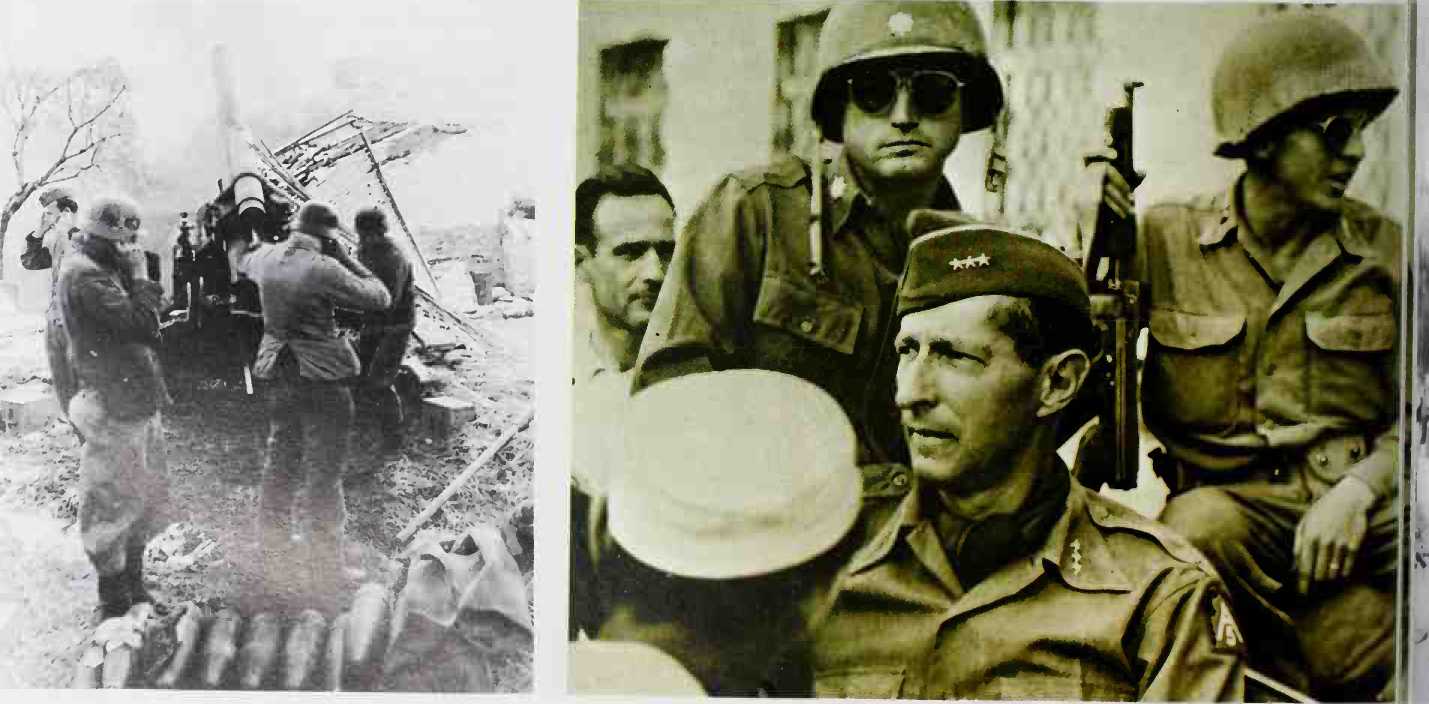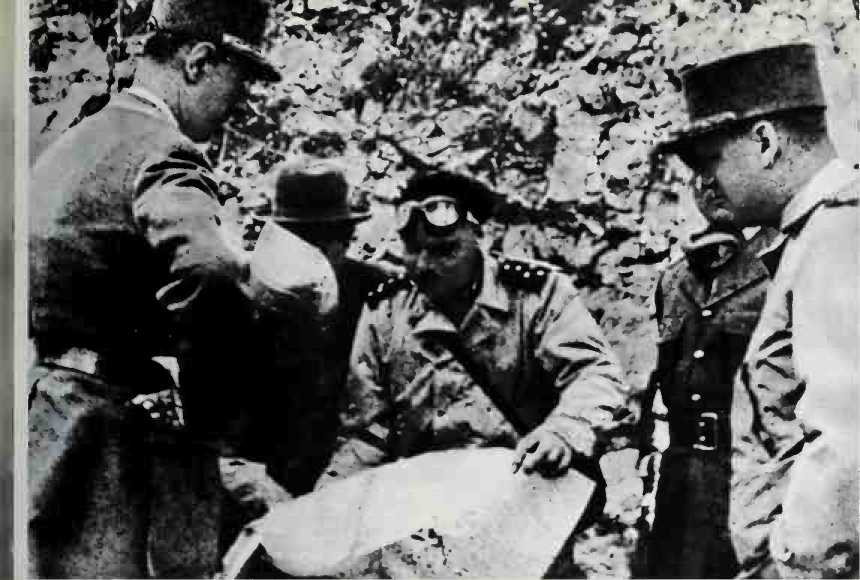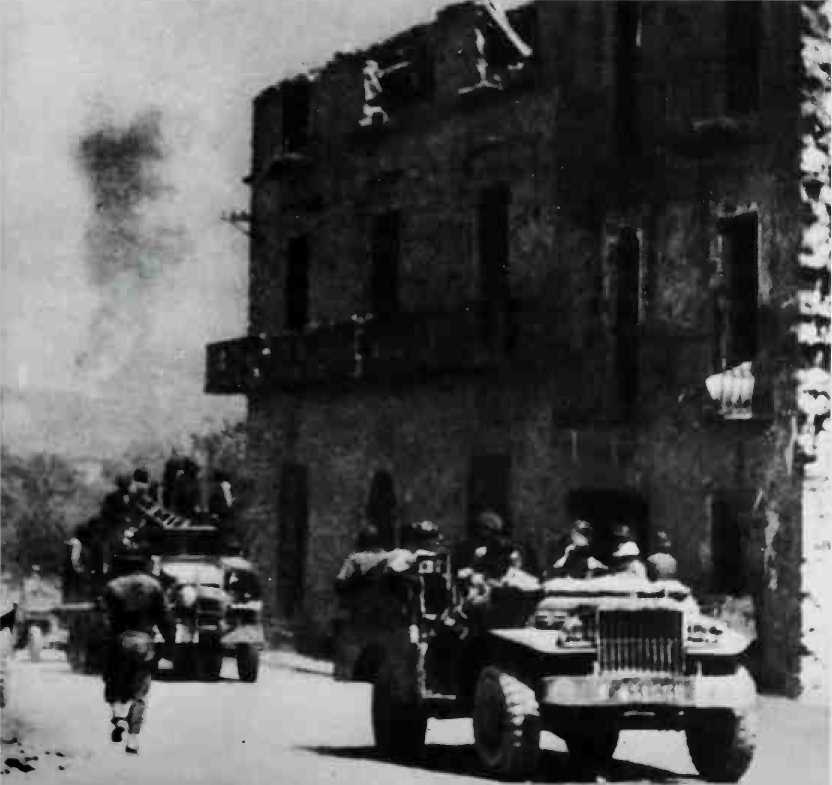After a little hesitation Clark was won over to his subordinate’s plan. This had the great advantage of including in the French Expeditionary Corps’ outflanking movement the Hitler Line or "Senger defile”, which blocked off the Liri valley at Pontecorvo. On the other hand there was a formidable obstacle in the Monti Aurunci, which reached over
5,000 feet at Monte Petrella. It might be assumed that the enemy had not occupied the heights in strength, and that surprise could be achieved by using the natural features as Guderian had done in the Ardennes in May 1940 and List in the Strumitsa gap on April 6, 1941.
A A Goumier machine-gunner of the Freneh Expeditionary Corps holding a position among the ruins of a house.
V German field-gunners cover their ears while blasting enemy positions in the hills.
V Lieutenant-General Mark Clark, eommander of the Ameriean 5th Army. Was he right to push on to the politieal objeetive of Rome rather than pursuing the military objeetive of cutting off major German units just north of Cassino? ‘


A General Juin (centre, with goggles) explains his plans to General de Gaulle.
V French troops enter Castel-forte

Not take long to muster his forces, but General Juin was relying on the legs of his Moroccan mountain troops and of his 4,000 mules.
Though Clark agreed to the French plan, he could not get Sir Oliver Leese to accept its corollary, the Atina plan, and though he used a corps against Cas-sino where Freyberg had sent in one division, the pincer was still too short and there were heavy losses.
Kesselring had 23 divisions, but most of them were worn out and short of ammunition, whereas the Allies had an abundance of everything. Here again the Germans were waging "a poor man’s war” as General Westphal put it.
Another serious disadvantage for Kesselring was his enemy’s overwhelming superiority in the air and at sea. This was so important that it caused him to worry not only about a landing at Civitavecchia or at Leghorn but also about whether Allied air power would cut off XIV Panzer Corps’ communications at Frosinone. The uncertainty of his situation compelled Kesselring to write in his memoirs about his main reason for concern at this time: "The great dangerous unknown quantity which lasted until D-day plus 4 was the following: where would the French
Expeditionary Corps be engaged, what would be its main line of advance and its composition?”




 World History
World History









